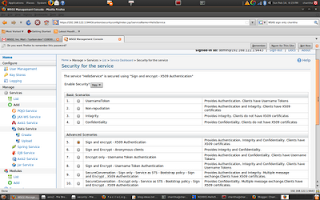WSO2 Application Server - Run web applications and web services on the same server

Today WSO2 released its newest product (rather a renamed version of WSO2 web services application server - WSAS, with a lot of improvements), WSO2 Application Server - 4.0.0 WSO2 Application server is an unified platform to host web services and web applications together. This completely open-source product is based on world's most popular web application server, Apache Tomcat and No:1 web service engine, Apache Axis2. WSO2 Application Server is part of WSO2 Carbon platform hence it brings the power of highly flexible component model hence your web applications can utilize the features provided by carbon platform. For example, web applications can be authorized using WSO2 identity and user management components. As the other WSO2 products, WSO2 application server comes with a rich graphical management console which allows you to manage your web applications very easy and effective manner. Lets have a glance at WSO2 Application Server...... Step 1 Download WSO2 Application Server-4





